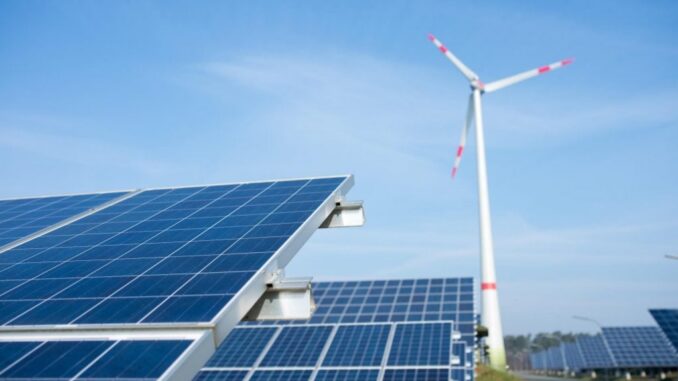
The primary difference between renewable and nonrenewable energy sources lies in their availability and impact on the environment.
Here’s a detailed comparison: Renewable Energy – Definition:








Renewable energy comes from sources that are naturally replenished on a human timescale.
Key Characteristics:
Sustainability:
Renewable resources are continually replenished and do not deplete over time. Examples include sunlight, wind, and flowing water.
Environmental Impact:
Generally produces fewer pollutants and greenhouse gases. Examples include solar, wind, and hydropower, which emit no pollutants during operation.
Resource Abundance:
Widely available and often abundant. Examples include the sun and wind, which are available in most parts of the world.
Intermittency:
Some renewable sources, such as solar and wind, are intermittent and dependent on weather conditions.
Infrastructure:
Requires investment in new infrastructure, such as solar panels and wind turbines, and in some cases, energy storage systems to manage intermittency.
Examples:
Solar Energy: Harnessed from sunlight using photovoltaic panels.
Wind Energy: Captured using wind turbines.
Hydropower: Generated by the flow of water in rivers or from dams.
Geothermal Energy: Derived from the Earth’s internal heat.
Biomass Energy: Produced from organic materials such as plants and waste.
Nonrenewable Energy
Definition:
Nonrenewable energy comes from sources that exist in finite quantities and are depleted as they are consumed.
Key Characteristics:
Finite Resources:
Nonrenewable resources are limited in supply and will eventually run out. Examples include coal, oil, natural gas, and uranium.
Environmental Impact:
Typically has a significant environmental impact, including high greenhouse gas emissions, air pollution, and environmental degradation from extraction processes.
Resource Extraction:
Requires extensive extraction and mining operations, which can have environmental and social impacts.
Energy Density:
Nonrenewable sources often have a high energy density, meaning they provide a large amount of energy per unit of fuel.
Established Infrastructure:
Extensive existing infrastructure for extraction, processing, and distribution.
Examples:
Coal: Mined and burned to produce electricity and heat.
Oil: Extracted and refined into fuels such as gasoline and diesel.
Natural Gas: Extracted and used for heating, electricity generation, and as an industrial feedstock.
Nuclear Energy: Generated from uranium, which undergoes nuclear fission to produce heat and, subsequently, electricity.

Leave a Reply